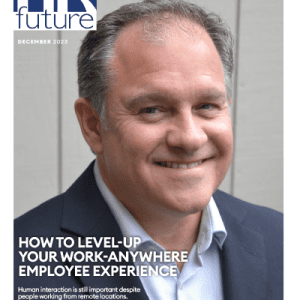Use digital tools to rescue the employer- employee relationship.
In most fast-moving workplaces, it’s more than common for employees to be scattered across different locations, embracing their own routines and contrasting work environments. As traditional working practices shift by making way for flexible working, workforce modernisation and operational digitisation, it is becoming more challenging for employers to connect with employees in a corporate setting. Digital tools can bridge this gap in communication, allowing employers to directly address workers through the click of a button.
If you operate a business of modest size, it’s naturally easier to communicate with employees due to the close-knit nature of the business. Digital tools can be used to further compliment your communication strategy, modernising your way of operating and upgrading the employee experience.
If you are a larger company, opening the lines of communication encourages transparency and boosts trust in employees, putting a face to the driving force of the business. By using software which establishes a connection between both employer and employee, this shows that the employer is approachable, accessible and transparent.
Kick-start employee engagement
There are many third-party platforms which can be used to open the lines of communication between employer and employee. From bespoke software, purchasing a licence for existing software or using external software platforms, you can find a suitable solution to help establish and even rescue the employer-employee relationship.
Engagement can vary in several ways, from acknowledging a job well done, giving feedback, to general social chatter. By sparking communication and providing a platform through which this can be done freely, employees can share their views, making them instrumental in shaping and influencing new strategies in the workplace.
Acknowledge a job well done
A token of gratitude, acknowledgement of a job well done and a show of praise are all actions which can inspire and encourage employees to work more effectively. This can help boost employee morale and create a pleasant work environment in which exceptional staff members are recognised.
Software such as Kudos is specifically designed to recognise outperforming employees by showing virtual acknowledgements such as a thumbs up or a handshake. Employers can decide to launch an incentive scheme through which an accumulation of the aforementioned ‘acts of praise’ can represent points which can be put towards redeeming an incentive.
There are dedicated employee incentive schemes such as Perkbox, which encourage employee engagement through access to bitesize incentives. Perkbox is aimed at employers looking to boost the financial, emotional and physical wellbeing of staff by providing access to discounts and a facility through which employers can communicate directly with workers.
Digital transformation of HR
In addition to using digital tools to simplify internal company communications, this technology can also be used to upgrade your HR facility. This is instrumental as it is the central resource platform used by employees to access company guidelines, internal policies and key personal information.
An investment as such in your digital HR system can improve working standards and automate otherwise lengthy processes. This streamlines the likes of requesting annual leave, completing timesheets, submitting expenses and viewing payslips, uniting all these elements under one digital roof.
By digitising aspects which would traditionally require approval through pen and paper, you can reduce the number of physical resources used and adopt an eco-friendly approach which is beneficial to both employees and the environment.
Use digital platforms to exchange feedback
Using a digital platform to request and gather feedback can be instrumental in generating high response rates as it is an efficient and accessible way to receive instantaneous feedback, speeding up the cycle. By using the likes of a web survey, for example, Survey Monkey, you can easily incorporate anonymity into the process, providing a safe and confidential hub through which feedback can be submitted.
By using an online platform, the employee can access it comfortably and at a time of their choosing. This works both ways as the employer can fulfil their commitment to work closely with their workforce, checking in out and out of the platform through a few clicks.
Handpick employee engagement tools
When referring to digital tools, this can range from the likes of survey platforms, internal intranet systems, employee incentive hubs, employee recognition software and so on. Handpicking the right tools for your business is vital as each company functions differently and different employers may have alternative ways of operating to each other, making one platform more suitable than the other. Here are some examples of software:
Employee recognition software:
• Kudos;
• Sage Employee Recognition;
• Asana; and
• Perkbox.
Employee incentives software:
• Perkbox;
• Edenred;
• Caboodle;
• Red Letter Days; and
• People Value.
Surveys and feedback software:
• Survey Monkey;
• Google Forms;
• Jotform;
• Typeform; and
• Formstack.
Digital task management software:
• Asana;
• Google Docs;
• Trello; and
• Wunderlist.
When choosing between platforms, you may want to consider the different controls offered by the platform, such as commenting publicly and feeding back to individual employees. Public praise can work effectively to motivate other staff members, however, if the nature of your HR business requires you to caution sensitivity, you may have to opt for a platform which allows you to give praise on a private level to protect personal details and confidential data.
If your relationship with employees is undeveloped, a digital platform can integrate smoothly into your strategy to rescue the relationship. Existing software can also help in the modernisation of the workplace, encouraging a more efficient and streamlined way of working. As technology advances, expectations for new software in the workplace also rise, which is when the relationship with the employer is a vital factor which has the potential to enhance the standards of the workplace.
John Baird is a partner at Scotland Debt Solutions, specialising in assisting Scottish residents struggling from personal debt problems. With over 25 years’ experience, the SDS team have a wealth of experience in personal insolvency and can offer debt solutions, such as Sequestration, Trust Deeds and Debt Arrangement Schemes.









